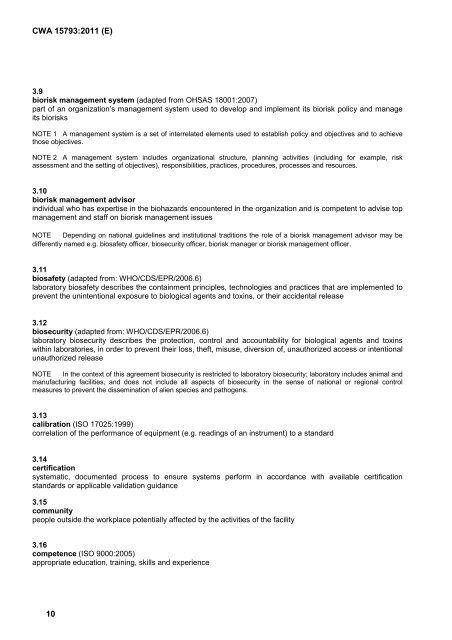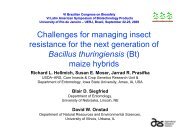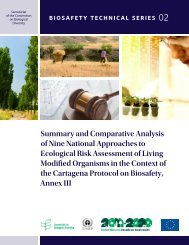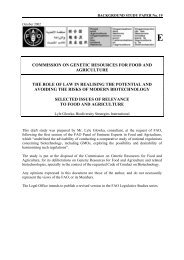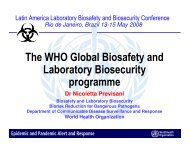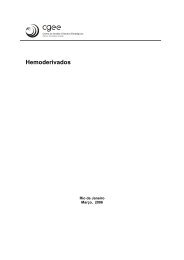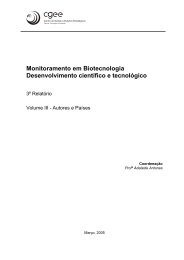CEN WORKSHOP AGREEMENT CWA 15793
CEN WORKSHOP AGREEMENT CWA 15793
CEN WORKSHOP AGREEMENT CWA 15793
Create successful ePaper yourself
Turn your PDF publications into a flip-book with our unique Google optimized e-Paper software.
<strong>CWA</strong> <strong>15793</strong>:2011 (E)<br />
3.9<br />
biorisk management system (adapted from OHSAS 18001:2007)<br />
part of an organization’s management system used to develop and implement its biorisk policy and manage<br />
its biorisks<br />
NOTE 1 A management system is a set of interrelated elements used to establish policy and objectives and to achieve<br />
those objectives.<br />
NOTE 2 A management system includes organizational structure, planning activities (including for example, risk<br />
assessment and the setting of objectives), responsibilities, practices, procedures, processes and resources.<br />
3.10<br />
biorisk management advisor<br />
individual who has expertise in the biohazards encountered in the organization and is competent to advise top<br />
management and staff on biorisk management issues<br />
NOTE Depending on national guidelines and institutional traditions the role of a biorisk management advisor may be<br />
differently named e.g. biosafety officer, biosecurity officer, biorisk manager or biorisk management officer.<br />
3.11<br />
biosafety (adapted from: WHO/CDS/EPR/2006.6)<br />
laboratory biosafety describes the containment principles, technologies and practices that are implemented to<br />
prevent the unintentional exposure to biological agents and toxins, or their accidental release<br />
3.12<br />
biosecurity (adapted from: WHO/CDS/EPR/2006.6)<br />
laboratory biosecurity describes the protection, control and accountability for biological agents and toxins<br />
within laboratories, in order to prevent their loss, theft, misuse, diversion of, unauthorized access or intentional<br />
unauthorized release<br />
NOTE In the context of this agreement biosecurity is restricted to laboratory biosecurity; laboratory includes animal and<br />
manufacturing facilities, and does not include all aspects of biosecurity in the sense of national or regional control<br />
measures to prevent the dissemination of alien species and pathogens.<br />
3.13<br />
calibration (ISO 17025:1999)<br />
correlation of the performance of equipment (e.g. readings of an instrument) to a standard<br />
3.14<br />
certification<br />
systematic, documented process to ensure systems perform in accordance with available certification<br />
standards or applicable validation guidance<br />
3.15<br />
community<br />
people outside the workplace potentially affected by the activities of the facility<br />
3.16<br />
competence (ISO 9000:2005)<br />
appropriate education, training, skills and experience<br />
10


